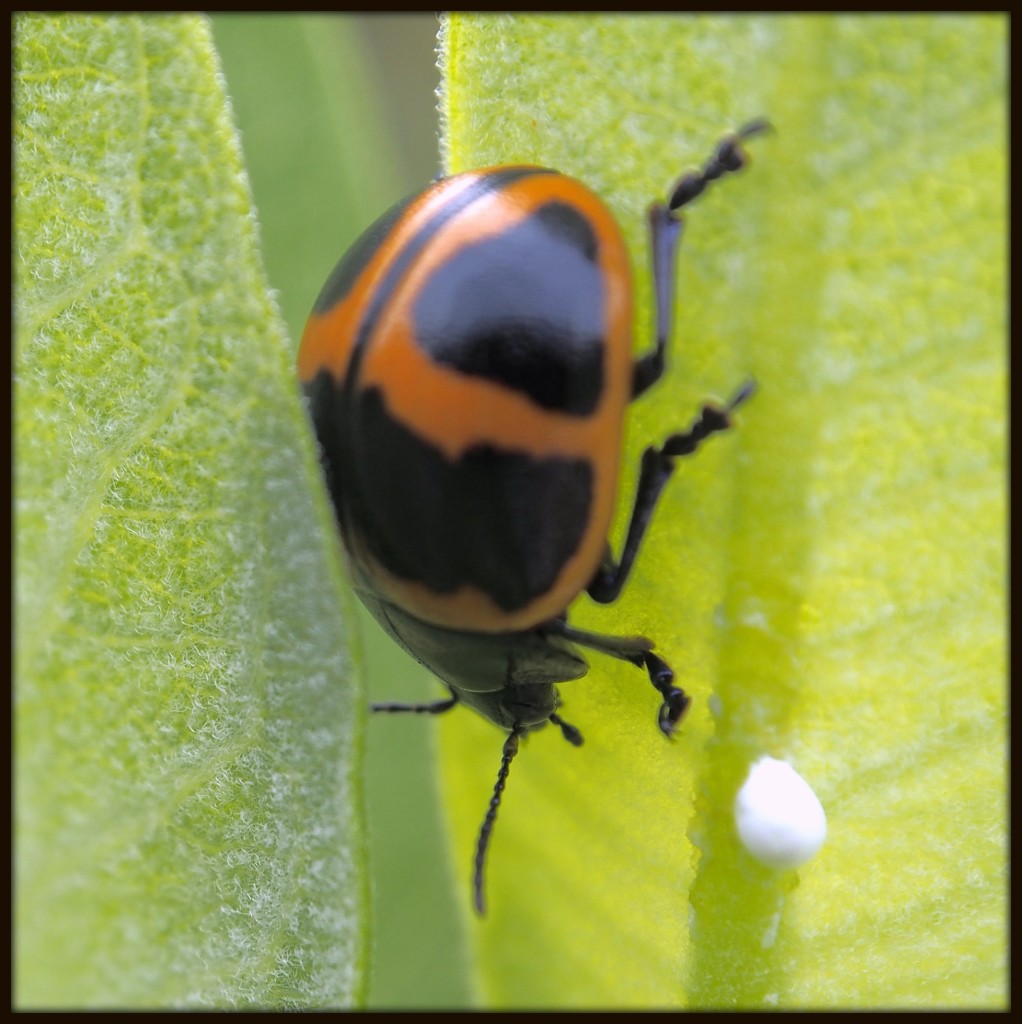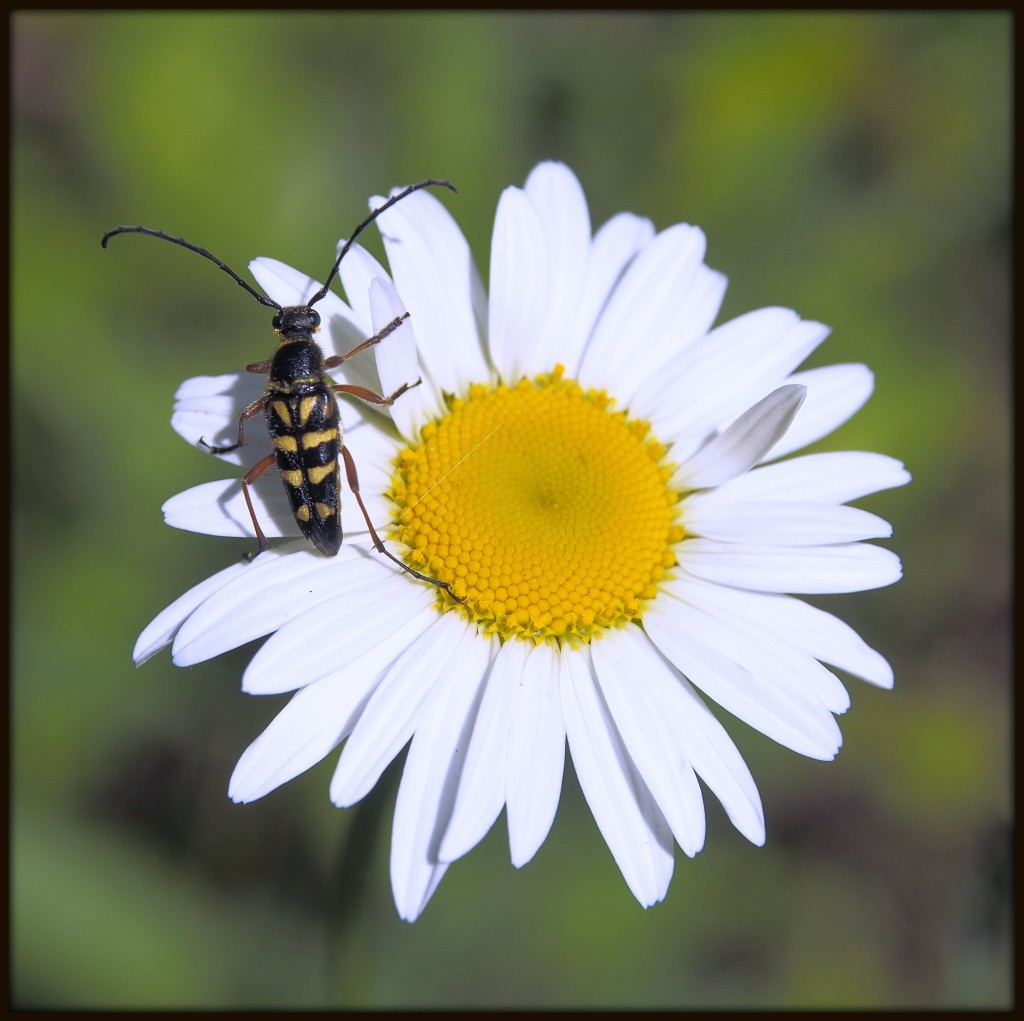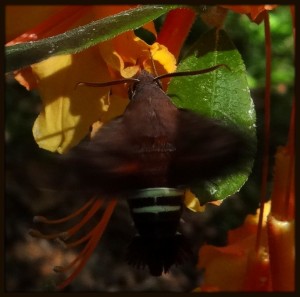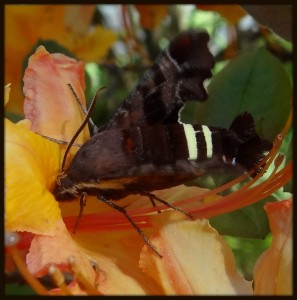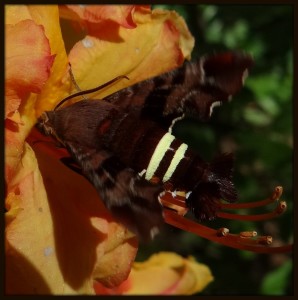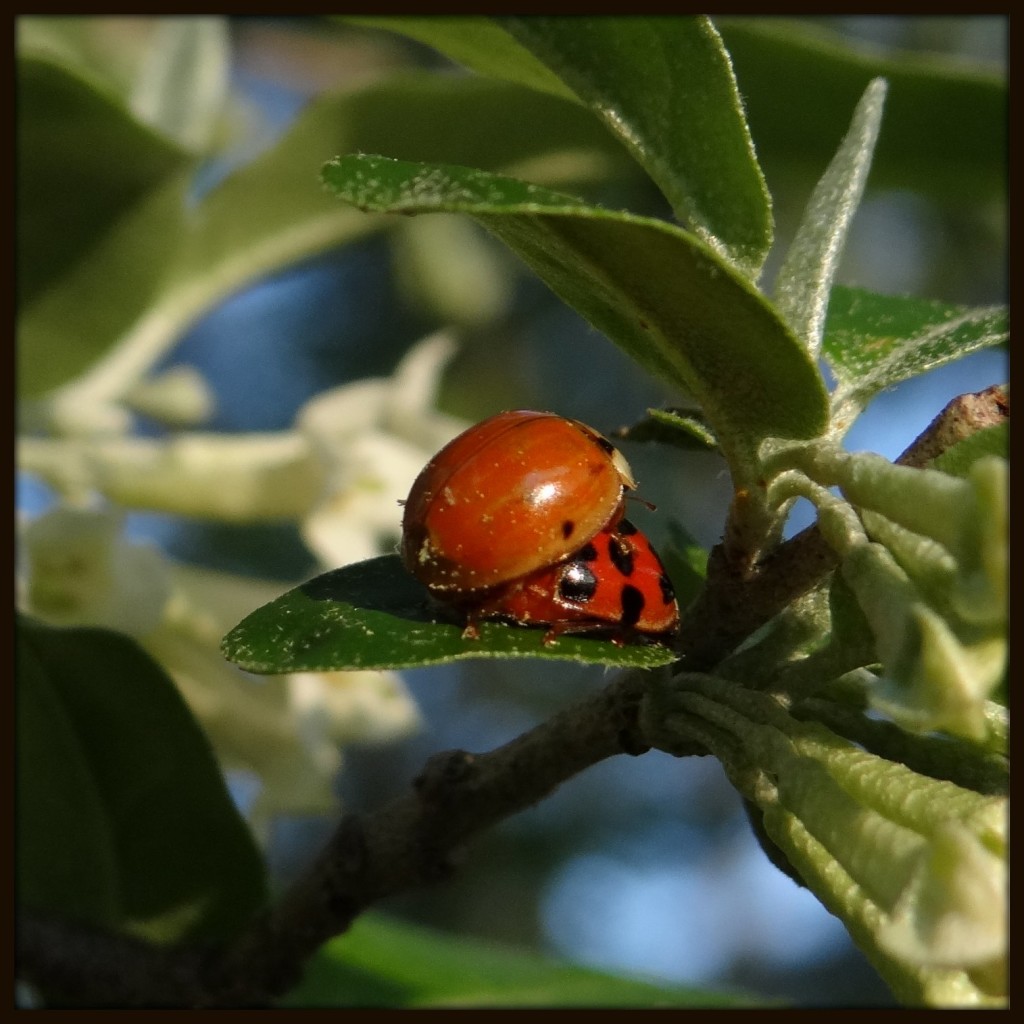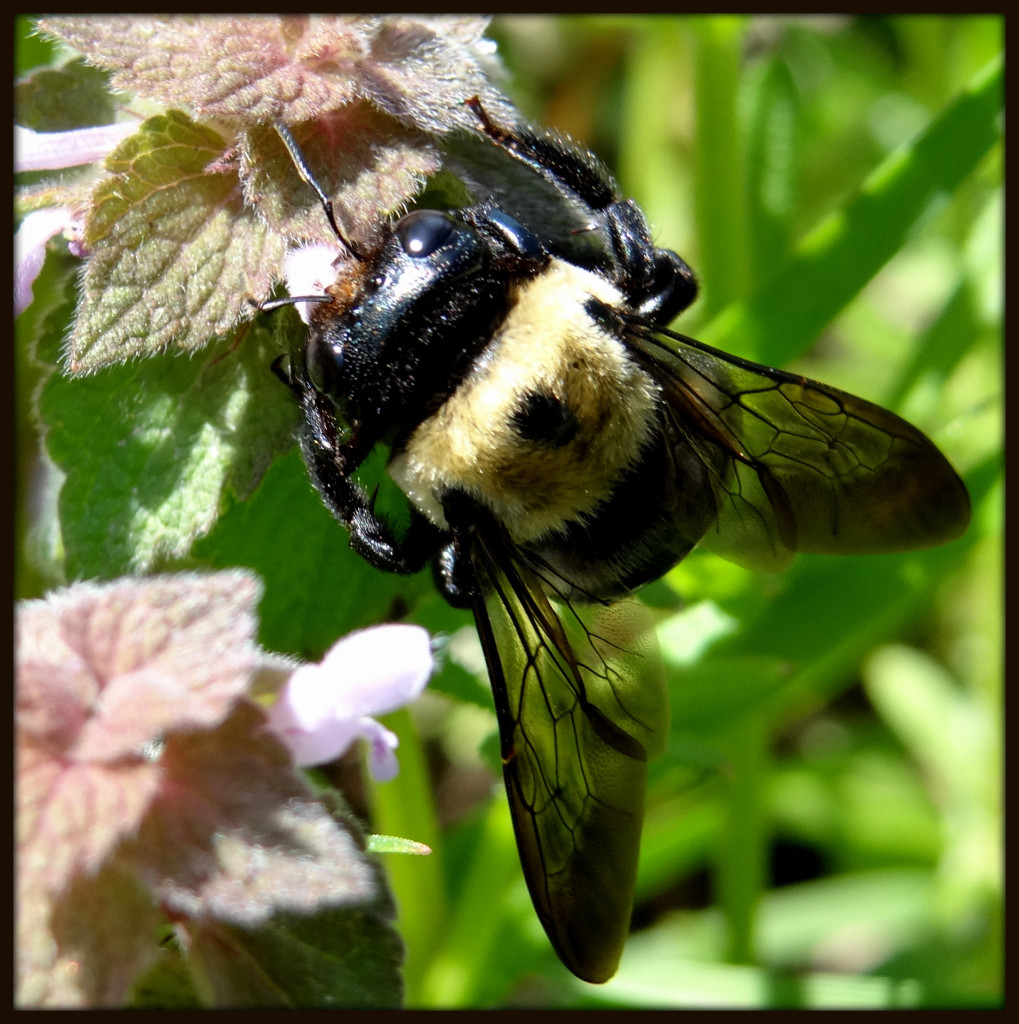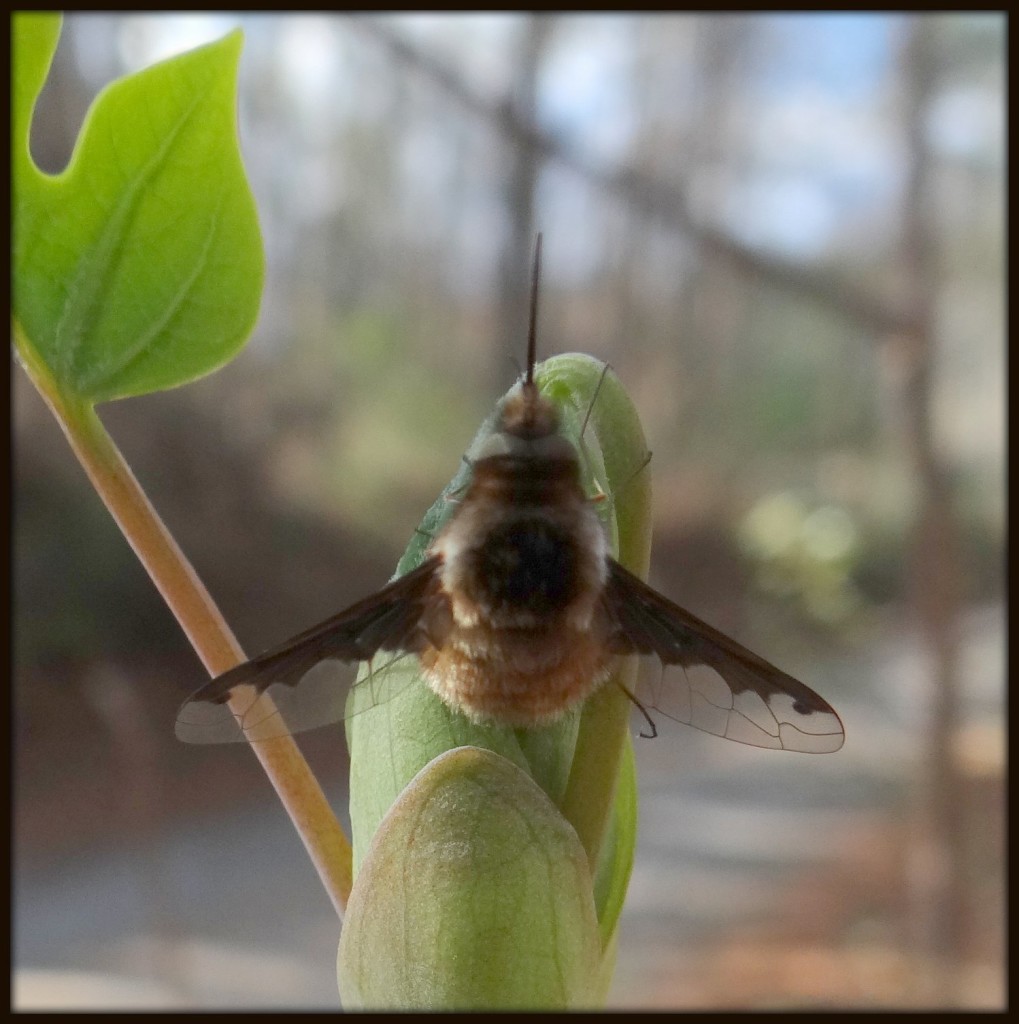I caught this red-banded leafhopper (Graphocephala coccinea) resting on a sweetgum leaf along Piney Woods Church Road this afternoon. Although common, they are quite small (less than half an inch in length), and easily overlooked (unless they have become a plague in one’s garden). Because they feed on the sap of plants, they are generally considered agricultural pests. I still find them fascinating, with their almost alien shape and brilliant coloration.

